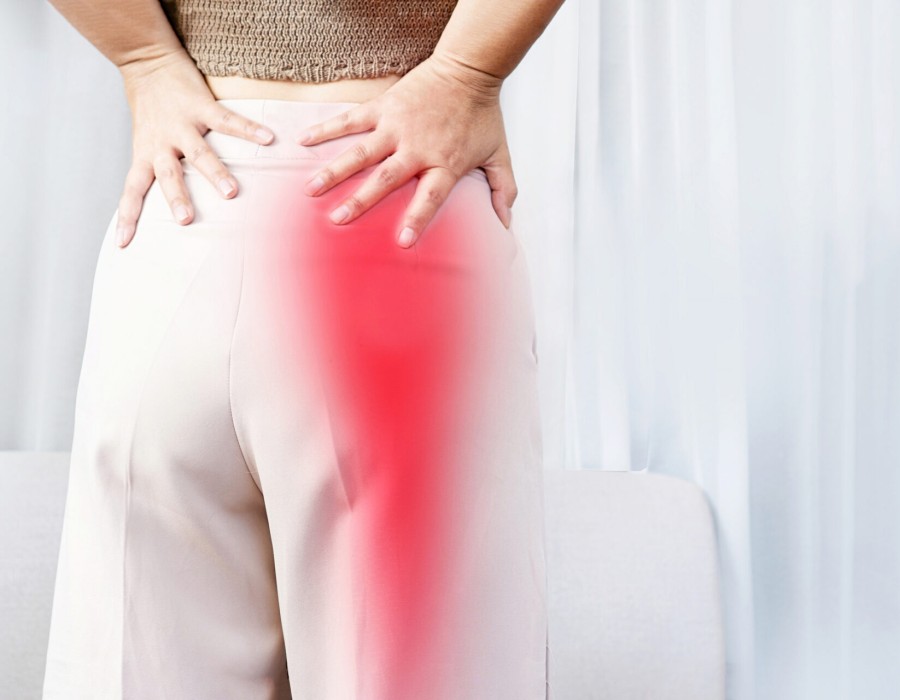Lower back pain and its radiating cousin, sciatica, are common ailments that can significantly impact daily life. While various treatments exist, exercise plays a crucial role in both managing pain and preventing future episodes. For those seeking low-impact options, the recumbent bike often emerges as a comfortable and effective tool. Let's explore the connection between lower back pain, sciatica, and how a recumbent bike, along with other pain-relieving strategies, can offer a path towards recovery.
Understanding Lower Back Pain and Sciatica
Lower back pain is a broad term encompassing discomfort in the lumbar region. It can stem from muscle strains, ligament sprains, disc issues, or nerve irritation. Sciatica, on the other hand, is a specific type of lower back pain that radiates down the leg along the path of the sciatic nerve. This nerve, the longest in the human body, can become compressed or irritated due to various factors like a herniated disc, spinal stenosis, or piriformis syndrome.
Common symptoms of lower back pain and sciatica include:
● Aching, sharp, or burning pain in the lower back.
● Pain radiating down the buttock, thigh, and sometimes into the foot and toes.
● Numbness, tingling, or weakness in the leg or foot.
● Pain that worsens with prolonged sitting or standing.
● Pain that is aggravated by certain movements like bending or twisting.
The Recumbent Bike: A Low-Impact Ally
When dealing with lower back pain and sciatica, high-impact exercises like running or jumping can exacerbate symptoms. This is where the recumbent bike shines. Its design offers several advantages:
● Back Support: Unlike upright bikes, recumbent bikes feature a reclined seat with back support. This distributes your weight more evenly and reduces pressure on the lumbar spine.
● Reduced Spinal Compression: The reclined position minimizes the vertical compression forces that can aggravate back pain and sciatic nerve irritation.
● Low Impact on Joints: Cycling on a recumbent bike is a smooth, low-impact activity that is gentle on the hips, knees, and ankles, which can often be affected by referred pain from the back.
● Controlled Movement: The stable nature of the recumbent bike allows for controlled and consistent leg movements, minimizing jerky motions that could aggravate pain.
● Cardiovascular Benefits: Despite being low impact, a recumbent bike still provides an effective cardiovascular workout, promoting blood flow which is essential for healing.
How to Use a Recumbent Bike for Pain Relief:
● Proper Setup: Adjust the seat so that your legs have a slight bend at the knee when the pedal is furthest away. Your back should be comfortably supported.
● Start Slowly: Begin with short sessions (10-15 minutes) at a low resistance level. Gradually increase the duration and resistance as your pain allows.
● Maintain Good Posture: Even on a recumbent bike, try to maintain a neutral spine and avoid hunching. Engage your core gently for added stability.
● Listen to Your Body: Stop if you experience any sharp or increasing pain. Some mild discomfort might be expected initially, but it should not worsen your underlying condition.
● Combine with Other Therapies: The recumbent bike is often most effective when used as part of a comprehensive pain management plan that may include stretching, strengthening exercises, and other therapies.
Additional Strategies for Lower Back and Sciatica Pain Relief
While the recumbent bike can be a valuable tool, it's crucial to incorporate other strategies for comprehensive pain relief:
● Acupressure: Applying pressure to specific points on the body may help alleviate sciatica pain. Try these commonly used acupressure points for sciatica.
● Gentle Stretching: Specific stretches targeting the hamstrings, glutes, and piriformis muscles can help relieve pressure on the sciatic nerve. Examples include knee-to-chest stretches, piriformis stretches, and hamstring stretches.
● Strengthening Exercises: Building strength in your core, glutes, and back muscles provides better support for your spine and can help prevent future pain episodes. Exercises like planks, bridges, and bird dogs are often recommended.
● Heat and Ice Therapy: Applying heat can help relax tight muscles and increase blood flow, while ice can reduce inflammation. Experiment to see which provides more relief for you.
● Over-the-Counter Pain Relievers: Nonsteroidal anti-inflammatory drugs (NSAIDs) like ibuprofen or naproxen can help reduce pain and inflammation.
● Physical Therapy: A physical therapist can design a personalized exercise program tailored to your specific needs and teach you proper body mechanics.
● Chiropractic Care: Some individuals find relief through chiropractic adjustments that aim to restore proper spinal alignment.
● Massage Therapy: Massage can help to relax tense muscles and improve blood flow. Deep tissue massage may be beneficial for releasing tight muscles around the sciatic nerve.
● Mindfulness and Relaxation Techniques: Chronic pain can be stressful. Practicing mindfulness, meditation, or deep breathing exercises can help manage pain perception and improve coping mechanisms.
When to Seek Professional Help
It's important to consult a doctor if your lower back pain or sciatica is severe, doesn't improve with home care, or is accompanied by:
● Weakness or numbness in the legs or feet.
● Loss of bowel or bladder control.
● Fever.
● Unexplained weight loss.
● Pain that worsens at night.
These symptoms could indicate a more serious underlying condition that requires medical attention.
Conclusion
Lower back pain and sciatica can be debilitating, but a proactive approach involving low-impact exercise like the recumbent bike, combined with targeted stretches, strengthening exercises, and other pain-relieving strategies, can offer significant relief. Remember to listen to your body, start slowly, and consult with healthcare professionals to develop a personalized plan that addresses your specific needs and helps you regain a pain-free and active life.





Comments